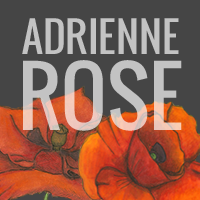The other day I showed you all my giant color chart. A lot of you were interested in seeing how I did it. So here we are. I am going to show you! I love color charts and I find them super helpful! Now, my chart is not the end-all-be-all of color charts or anything. So, you can be as creative as you like, or not. I like my charts this way because it shows me many different things of which I will explain along the way.
Supplies:
- Paper (I like having it in my art journal but you could put it anywhere!)
- Media of choice (watercolors, colored pencils, acrylics, etc)
- If using a paint you'll need a brush, if using watercolors, you'll need water and a paper towel.
- Pen or pencil
- Ruler
Determine how many colors you will be using. I will be using three basic colors, because whether you're using 2 colors or 24, the idea is the same.
Measure out your square, or rectangle, or whatever to size. If you are using 3 colors you will need a 4x4 square (or rectangle). 4 colors = 5x5, 5 colors = 6x6, 6 colors = 7x7 --- you get the idea.
Honestly it is not necessary to use a ruler or measure at all. You can do it by eye if you like a more "loose" look. Me, I am pretty OCD, but I think it could look pretty cool without using a ruler for a straight edge!
Honestly it is not necessary to use a ruler or measure at all. You can do it by eye if you like a more "loose" look. Me, I am pretty OCD, but I think it could look pretty cool without using a ruler for a straight edge!
Add a few more lines then add in the colors of your choosing.
Mixing colors. Now we are onto two different colors together. Row 3 column 2, Magenta and Yellow. With the same premise as yellow, fully saturated on the left and watered down on the right. I try my best to get a real good 1 to 1 ratio of color and use this.
In column 3 row 2, you will have the same color combination. However, most color charts I have seen left these "repetitive areas" blank. But I can't just leave it blank!
You see, I forgot to take a photo before I added in the color, so bare with me. Lol.
What I did here was add in my three colors. Yellow, Magenta, Cerulean. In the first row, and in the first column, I put them in, in the same order. Where two of the same colors converge, I make a fully saturated color (or whatever color you're on) on the left, and then on the right the watered down version of the same color. The example on the right shows yellow. (Row 2 and column 2 in the photo above).
Same goes for Magenta and Cerulean in the large photo above.
It seems a little repetitive at the moment, but, in the end it really looks great! Again, you do not have to do it this way, but I really like seeing the fully saturated color and the watered down color. It helps me imagine a middle value, without having to actually make it.
Mixing colors. Now we are onto two different colors together. Row 3 column 2, Magenta and Yellow. With the same premise as yellow, fully saturated on the left and watered down on the right. I try my best to get a real good 1 to 1 ratio of color and use this.
In column 3 row 2, you will have the same color combination. However, most color charts I have seen left these "repetitive areas" blank. But I can't just leave it blank!

So, to see even more colors that my original three colors can produce, I have added these boxes with four little boxes within.
In the photo to the left (the boxes of purple and pink) Row 1-Column 1 contains a mixture of mostly cerulean, and a little magenta. In row 2-column 1 contains a mixture of mostly magenta and a little bit of cerulean. In Column 2 rows 1&2 are the watered down versions. (does this make sense? Let me know.)
Once you are all finished you will have a beautiful color chart full of so many colors that you probably didn't even think you could make with your measly 3 colors! I love doing color charts. I love seeing how the watered down versions look, which give me more confidence in color gradation (light to dark).
Do you have any questions about this? Can I make it more clear? I hope that this little "How To" helps you out and I would LOVE to see your color chart!! Please comment with a link to your color chart!
Don't forget though, it doesn't have to be exactly like mine, and you can use your favorite art medium (it doesn't have to be watercolors).













No comments:
Post a Comment
Thank you so much for stopping by and taking the time to leave a comment! I appreciate it SO much!